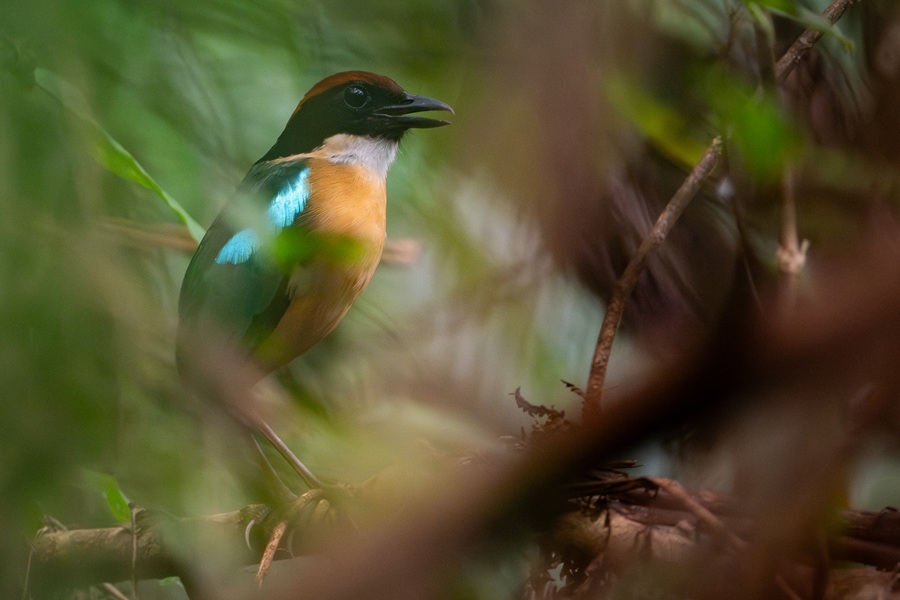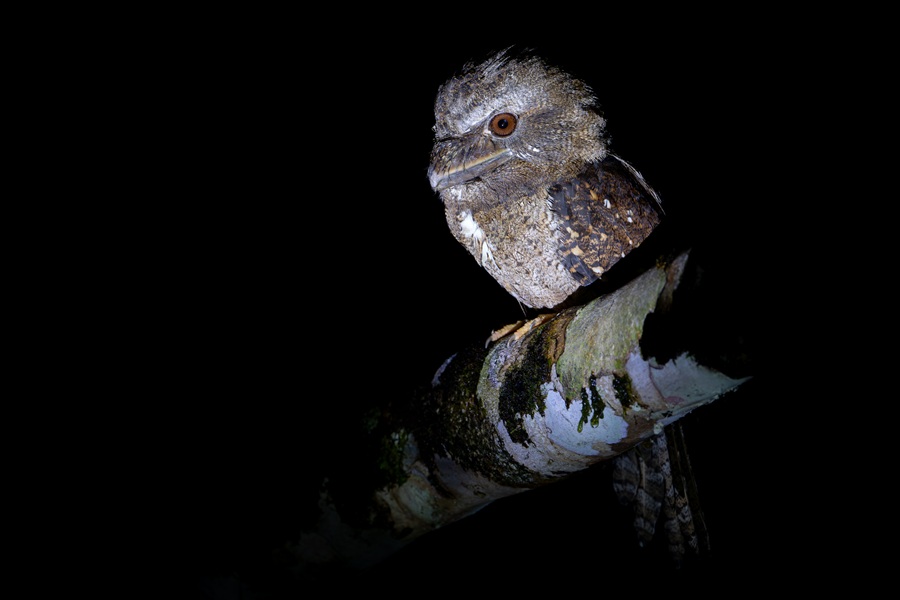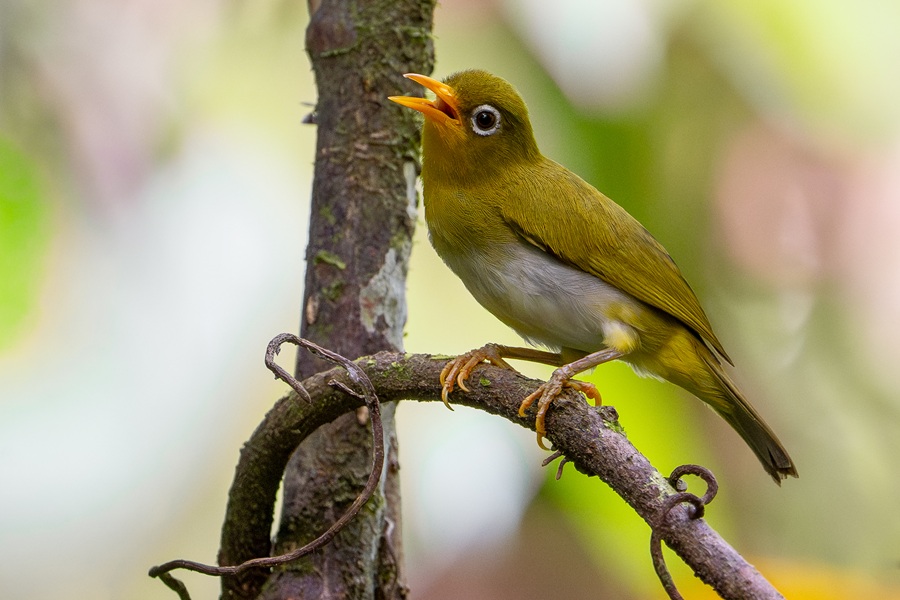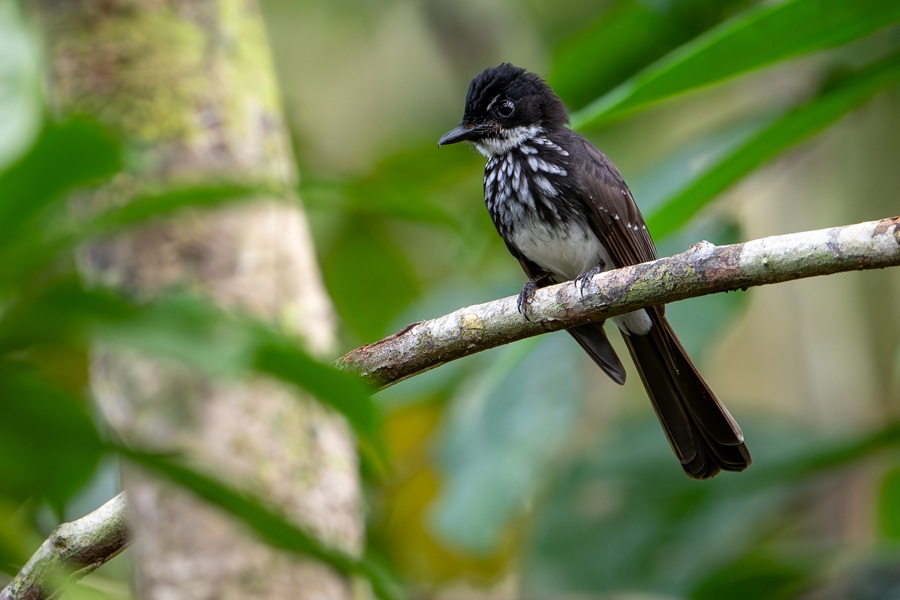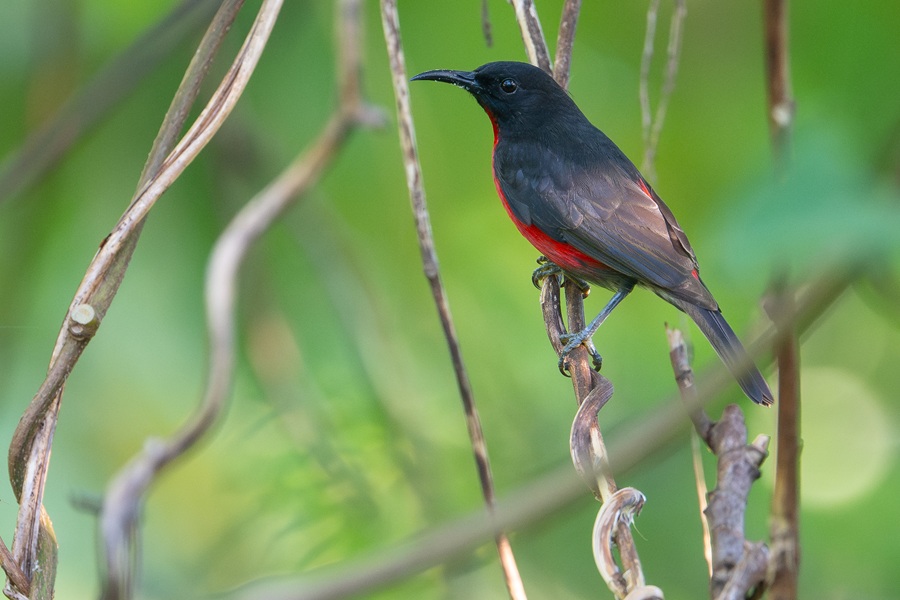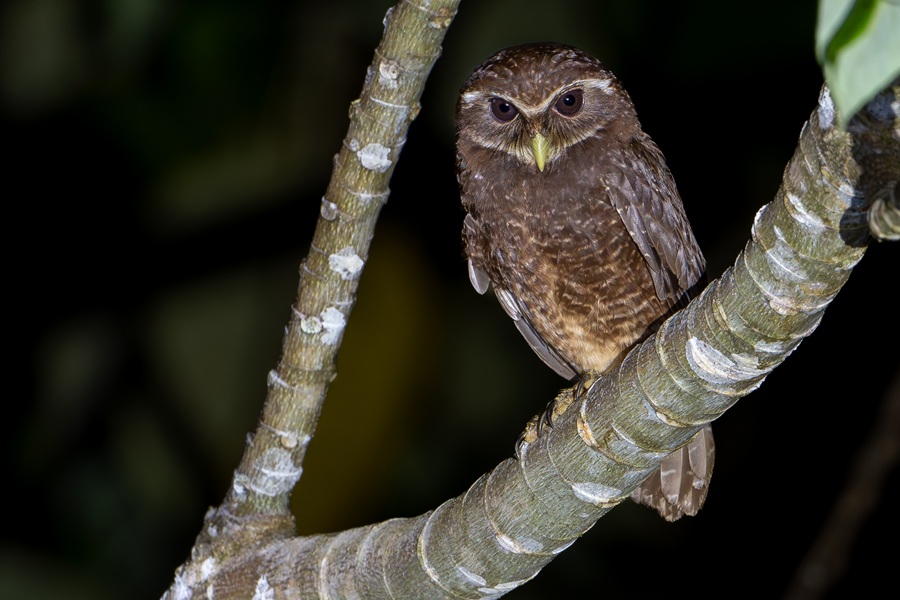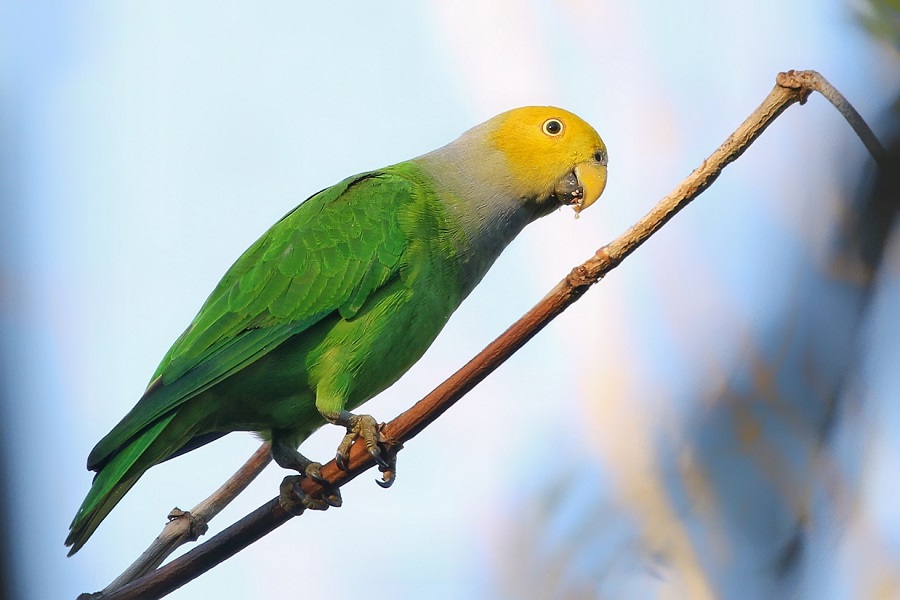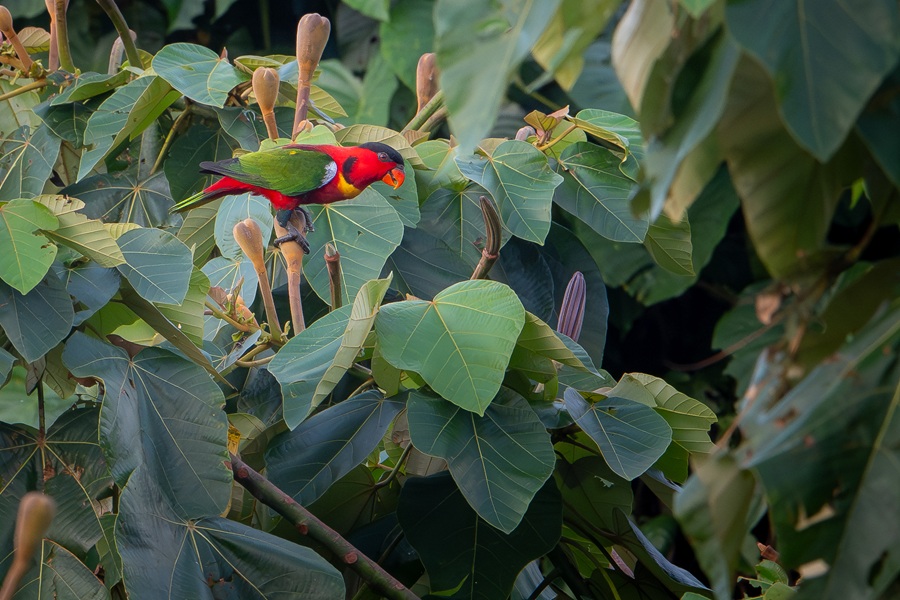Solomon Islands: Highlights
While this tour is easier than the standard month-long itinerary, it is by no means easy! Mud, sweat, slippery treks, and shaky logistics. This is what a Solomon Islands tour is all about, but these sleepy, forgotten islands in the southwest Pacific hold some glorious, very rarely observed birds that very few birders will ever have the privilege to see. Although the total area of this archipelago is smaller than Belgium, these rich islands have more range-restricted species than any other Endemic Bird Area in the world! With some hiking, a bit of cursing, and a pinch of luck, we have a chance to record more than 60 endemics.
Next Dates
18 June - 3 July 2027 (16 days)
Leaders:
Joachim Bertrands
Group Size Limit:
7
Single Room Supplement: $
600 USD
Deposit: $
1500 USD
Price: $
8100 USD
Add a Title
Leaders:
Joachim Bertrands
Group Size Limit:
Add a Title
Single Room Supplement: $
TBD
Deposit: $
TBD
Price: $
TBD
Add a Title
We often need to modify the length of this tour to fit with changing domestic flight schedules. Exact timings will be confirmed six months before the tour, and it is important that all booked participants are available to travel one week either side of our advertised start/end dates. Please contact us if you have any concerns.
Accommodation:
The town-based hotels in Honiara and Gizo are of good standard, but we will otherwise be staying in a mix of moderate to basic guesthouses and huts, usually with cold water and shared facilities.
Walking difficulty:
This is a strenuous tour, more so than many of our other tours. To ensure full participation, participants should be prepared for regular birding hikes (often on consecutive days) exceeding 2 hours on uneven and muddy trails, with some steep sections. In particular, the walk up to Tirotonga and trail birding on Santa Isabel is not easy (though it can be taken slowly).
Tour cost includes:
All accommodation, main meals, drinking water, internal flights (as stated in itinerary), overland transport, tips to local drivers and guides, travel permits, entrance fees, and guide fees.
Tour cost excludes:
Flights before and after the tour start/end, visa, travel insurance, tips to tour leaders, laundry, drinks, and other items of a personal nature.


This is the short version of our Solomon Islands tour which skips the steepest and most strenuous hikes, focusing on seeing as many endemics as we can in just over two weeks. For those who wish to see the longer and more comprehensive itinerary, click here!
GUADALCANAL
The capital city of Honiara acts as our base for the tour, and we will be flying in and out of here to go between islands. We will often take the opportunity to switch out our luggage at the hotel, depending on the requirements for each leg of the trip. There are several access points to good forest, which will allow us to see our first of the multi-island endemics, such as Sanford’s Sea Eagle, Solomons Cockatoo, Yellow-bibbed Lory, Cardinal Lory, MacKinlay’s Cuckoo-Dove, Ultramarine Kingfisher, Woodford’s Rail, Solomons Brush Cuckoo, Buff-necked Coucal, White-billed Crow, Solomons Cuckooshrike, Central Melanesian Cicadabird, Solomons Monarch, Chestnut-bellied Monarch, Steel-blue Flycatcher, cinnamomea Oriole Whistler, cockerelli White-winged Fantail, Solomons Rufous Fantail, Midget Flowerpecker, and Brown-winged Starling. More widespread Melanesian endemics include Song Parrot, Finsch’s Pygmy Parrot, Claret-breasted Fruit-Dove, Melanesian Kingfisher, and Central Melanesian Cicadabird. In terms of the island’s true endemics, we will target Guadalcanal Owl, Guadalcanal Dwarf Kingfisher, and Black-headed Myzomela. The scarce White-eyed Starling (strictly speaking, also shared with Bougainville, but extremely rare there) will be on our minds, but it is hard to guarantee.
SANTA ISABEL
After a two-hour walk from the coast up to Tirotonga Village, we will get settled in before an initial spotlighting session will hopefully already provide us with Solomons Frogmouth. Now placed in an endemic monotypic genus, the species is very far removed from all others across Australasia! West Solomons Owl is usually fairly easy, but only good luck will allow us to see the amazing Fearful Owl (which is often heard but typically remains out of sight unless our excellent local team can find us a roost). The other main drawcard here is Black-faced Pitta, the easternmost representative of this excellent family of birds. It is sometimes tricky to see, but we will have several days to maximise our chances. Other specialties include North Solomons Dwarf Kingfisher, Red-capped Myzomela, Yellow-throated White-eye, and the endemic subspecies of Woodford’s Rail.
RENNELL
The most relaxed island on our tour, this entirely flat atoll offers largely unafraid endemics and thus excellent opportunities for photography, which are not regular elsewhere in the Solomons! The island’s endemics include the stunning Rennell Shrikebill and Bare-eyed White-eye, alongside the imaginatively named Rennell Whistler, Rennell Fantail, Rennell Gerygone, Rennell White-eye, and Rennell Starling. This is also the best place to see the newly-split Vanikoro Island-Thrush. Endemic forms of Australian White Ibis, Song Parrot, and Cardinal Myzomela may all be considered future splits, while the striking Silver-capped Fruit Dove is a near-endemic not easily seen elsewhere. Much of the other avifauna here has a decidedly Vanuatuan influence, so we can also expect Pacific Kingfisher, Pacific Imperial Pigeon, and Melanesian Flycatcher. We should also see the endemic Rennell Flying-fox among the more numerous Pacific Flying-fox.
WESTERN ISLES
Aided by island-hopping speedboats, we will be birding across four different islands in this beautiful province, based out of a comfortable hotel on Gizo. Here, the Endangered endemic Gizo White-eye will entertain us behind town before we set our sights further afield. One day will see us head over to Kolombangara, the crossing giving our first chance for Heinroth’s Shearwater. This poorly-known species is thought to breed inside the crater rim, and we can usually expect to see at least one over the subsequent days while moving between islands. Once on land, we'll focus on the flightless endemic Roviana Rail and beautiful White-capped Monarch. This is also a good place to see the truly stunning Duchess Lorikeet, as well as North Melanesian Cuckooshrike. Some other Western Isles endemics are not always easy to find close to the coast, but we will do our best to see New Georgia Dwarf Kingfisher, Crimson-rumped Myzomela, Kolombangara Monarch, and Solomons White-eye. We will also spend time on islands to the north in search of Vella Lavella White-eye and Ranongga White-eye, plus hopefully the newly-split Vella Lavella Monarch, and two very distinctive subspecies: The dot-breasted lavellae White-winged Fantail, and the beautiful melanonota Oriole Whistler.
MALAITA
This island has some of the least accessible forest, but due to recent taxonomic shifts there are now an enticing set of endemics to find! Around our accommodation in the hills, we should easily find stunners like Malaita Owl and Red-vested Myzomela, while the forest edges host Malaita Monarch, Malaita Cuckooshrike, and Malaita White-eye. Further exploration should produce Malaita Dwarf Kingfisher and White-gorgeted Fantail, but since Malaita Fantail occurs only on the highest peaks we will certainly focus on exploring any new logging roads which might get us to the right altitude. Several distinct endemic subspecies include Woodford’s Rail, Midget Flowerpecker, a white-eyed form of Brown-winged Starling, and the very distinctive sanfordi Oriole Whistler.

